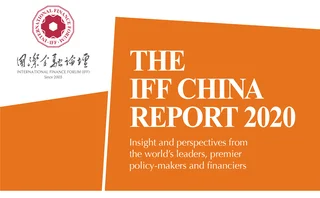
Think local


In recent years, there has been considerable progress in financial co-operation between China and Latin America. With increased space for collaboration, and greater consensus on the need for these relationships, financial co-operation has established a solid foundation and is progressing smoothly. Latin America has remained broadly positive about co-operation with China because the relationship has focused on integrity, sustainable development, people-to-people connectivity, inclusive development and the extension of co-operation benefits.
Problems on the horizon
Undoubtedly, challenges exist. In the eyes of China, there are three issues that require careful monitoring.

First is the political environment in Latin America – regime changes can often result in instability. Currently, governance incapabilities that are manifested in trade unions flexing their muscles, are holding the continent back.
Second, the instability of the currency system has taken a huge toll on the scope of co-operation. With the US dollar still dominating as the preferred global currency, Chinese financial institutions are vulnerable to additional losses because the exchange rate of Latin American countries fluctuates wildly against the dollar, leading to large depreciations. This extreme volatility is evidenced by the depreciation of the Brazilian real by 28.6% in the first half of 2018, and the Argentine peso by 49% across the same year. The Venezuelan bolivar depreciated by more than 100% several times in 2018 alone. This is unsurprising given the political volatility that continues to isolate the country from the rest of the world. Intense exchange rate fluctuations have also given rise to serious shrinkages of domestic currencies in Latin America. This severely threatens the security of Chinese loans and investments in the region, and restricts further development of financial co-operation between the two parties.
Third, China’s connection with – and understanding of – the local market is insufficient. In China, there is a skills gap when it comes to familiarity with Latin American financial markets, mergers and acquisitions, and management. This has severely limited the scope of business activities for enterprises. Moreover, there is a lack of understanding of local policies, laws and regulations, and culture. Colliding with local laws and regulations, Chinese projects are often suspended or stranded, decreasing the chances of financial co-operation.
In addition to the three issues China faces, Latin American countries need to open up further. More Chinese companies may be establishing a presence in Latin America but, in many cases, they are merely offices to provide services for Chinese-funded enterprises and Chinese citizens abroad. Access to the local market still comes up against too many obstacles.
Two further problems haunt China–Latin American co‑
operation. The first of these is that Chinese investments in Latin America are clustered mainly in the energy and infrastructure sectors. Over-concentrated investments, insufficiently scattered risks and the long recovery cycles of large projects can easily break the capital chain in an already vulnerable and
unstable economy.
Second, from a macro perspective, Chinese financial institutions gain a stronger sense of presence – and exert a more powerful influence – in Latin America than the other way around.
Fixing the co-operation gap
Strategic interests should be obtained on the basis of economic sustainability, and attention should be paid to cost/benefit analysis. China–Latin America financial co-operation should adapt to the changes in the structure of an economy and the mutual demands of each side. In this regard, Latin America should make good use of the favourable opportunities of China’s financial expansion and new round of opening-up.
Advancing financial dialogue between the two sides
Financial dialogue between China and Latin America can be enhanced by achieving the following:
- Bolstering political mutual trust, eliminating doubts and deepening financial co-operation with the assistance of the Belt and Road Initiative (BRI).
- Increasing dialogue and co-operation between the central banks, financial regulatory agencies and development finance institutions to accelerate information exchange.
- Reinforcing financial co-operation – particularly in policy system and currency clearing, local currency swaps, bond issuance and insurance. China must accelerate the upgrade and integration of the 1+3+6 co-operation framework into the BRI, to rapidly attain organic unity of financial co‑operation and financial integration.
- Fortifying co-operation with Latin American financial institutions and jointly developing Latin American markets.
Improving co-operation localisation
China should target further opening of the Latin American market – especially the financial market – to accelerate integration and achieve long-term sustainable development. This will require the following:
- Establishing talent pools comprising those with financial sector expertise, local languages, laws and culture.
- Indigenising employment – particularly encouraging Latin American students in China to engage with projects to strengthen China–Latin America co‑operation.
- Collaborative work with local institutions in taxation, law and accounting.
- Co-operation with local financial institutions and multilateral financial institutions such as local banks, government regulators and the Inter-American Development Bank.
Broadening investment fields
More investments can be made in infrastructure, agriculture, manufacturing, technological innovation and social livelihood. Latin America has huge investment needs across various industries. According to the UN Economic Commission for Latin America and the Caribbean, the continent will need a total of between US$3 trillion and $14 trillion in financing for agriculture, manufacturing and environmental protection before realising the UN’s 2030 Sustainable Development Goals, of which between $800 billion and $7 trillion will be required in infrastructure alone.
Mitigating the impact of exchange rates on financial co‑operation
The proportion of renminbi transactions should increase to reduce dependence on the dollar. Furthermore, measures to reduce currency mismatches can be adopted to appropriately increase liabilities denominated in local currencies. Under special circumstances, China can demand physical delivery to avoid exchange rate risks. Second, financial instruments that ward off financial risks can be brought in to enhance investment security. Third, it is important to heighten research into, and judgment of, the political and economic landscape to choose the right time for financial co-operation.
Making the most of the opportunities provided by financial opening‑up
Currently, there are many free-trade zones under construction that can usher in foreign financial institutions as a key to developing China’s financial services industry. Conversely, it is an opportunity for Latin American investors to access the Chinese market and expand their influence.
Exploring new sources of growth
To find new avenues for financial co-operation in traditional industries, China can enhance collaboration in the areas of insurance and bonds, as well as with traditional banks. Second, it is vital to shore up risk sharing mechanisms and improve risk monitoring capabilities. This can be done through creating new highlights in the supply chain of financial and financial technology co-operation and looking for breakthroughs in the realm of payment and settlement.
Only users who have a paid subscription or are part of a corporate subscription are able to print or copy content.
To access these options, along with all other subscription benefits, please contact info@centralbanking.com or view our subscription options here: subscriptions.centralbanking.com/subscribe
You are currently unable to print this content. Please contact info@centralbanking.com to find out more.
You are currently unable to copy this content. Please contact info@centralbanking.com to find out more.
Copyright Infopro Digital Limited. All rights reserved.
As outlined in our terms and conditions, https://www.infopro-digital.com/terms-and-conditions/subscriptions/ (point 2.4), printing is limited to a single copy.
If you would like to purchase additional rights please email info@centralbanking.com test test test
Copyright Infopro Digital Limited. All rights reserved.
You may share this content using our article tools. As outlined in our terms and conditions, https://www.infopro-digital.com/terms-and-conditions/subscriptions/ (clause 2.4), an Authorised User may only make one copy of the materials for their own personal use. You must also comply with the restrictions in clause 2.5.
If you would like to purchase additional rights please email info@centralbanking.com test test test







